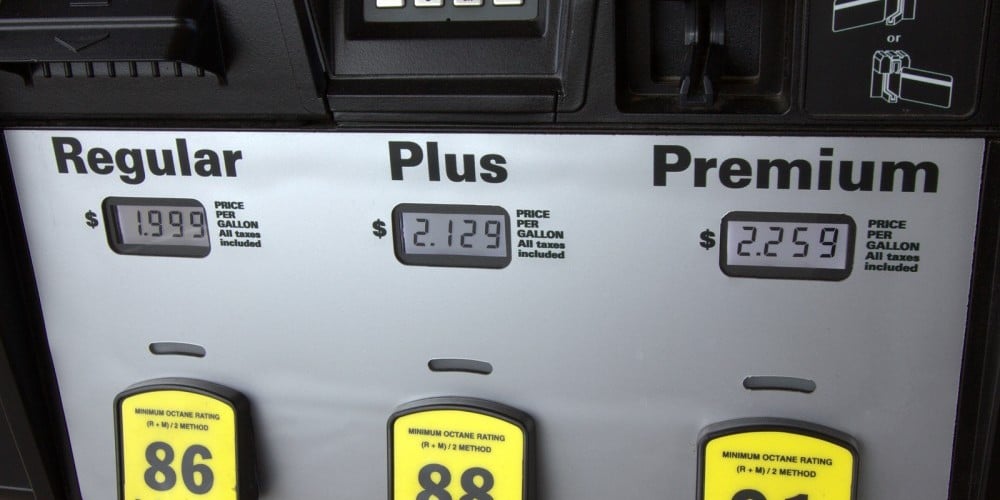Gas grades: Stick with regular

We all want the best for our vehicles. When you go to gas up, you expect to fill your car with lifeblood that’ll get you from point A to point B. Do you know which gas to use? Often folks look at the gas pump and see three choices: Regular, Mid-grade, and Premium. No doubt, if you’re just an average consumer, you imagine only the well-to-do’s with large pocketbooks pay for Premium luxury.
It’s not that simple. Most cars nowadays are designed to run optimally on Regular gas. In fact, giving your car higher-octane gasoline is generally useless. Unless otherwise indicated, Regular fuel is what should go into your tank.
Why?
Higher octane fuel may be called for when your engine is knocking. Knocking is caused by uneven fuel burning in the engine as opposed to even bursts. High octane gasoline has a higher ignition temperature, making it harder to ignite. The gas will burn more evenly, eliminating the knocking.
What does this have to do with your wallet?
Premium gas is obviously more expensive than Regular. The Automobile Association of America (AAA) collects national averages on the price of gasoline. At the time this article was written, the average for Regular gas was $2.58, Midgrade was $2.91, and Premium was $3.17.
Let’s assume your car has a 12-gallon tank. You’ll pay $30.96 by using Regular gas. Compare that to paying $38.04 for Premium. Let’s also assume you’re a frequent commuter. You’ll refill ever two weeks and there are 52 weeks in a year. Let’s do a little equation.
52 weeks ÷2 weeks = 26 weeks
26 weeks x $30.96 = $804.96 (The annual cost of Regular gas)
Let’s do a second equation taking the same 26 weeks and applying it to Premium gasoline.
26 weeks x $38.04 = $989.04 (The annual cost of Premium gas)
That’s almost a 21% difference in cost. The Federal Trade Commission (FTC) has this to say; “Studies indicate that altogether, drivers may be spending hundreds of millions of dollars each year for higher octane gas than they need.”
Buying Premium gas might seem like you’re doing your car a favor, but unless your owner manual explicitly states you should, don’t do it. There will be no added benefit and it will potentially cost you $200 or more every year.





